There’s an undeniable allure to cats with their broad, endearing faces, large, expressive eyes, and charmingly squished noses. These Flat Face Cats, with their distinctive features, have captured the hearts of feline enthusiasts worldwide. Beyond their captivating looks, these breeds boast unique personalities that are just as enchanting as their appearances.
However, it’s important to acknowledge that the very characteristics that make these breeds so popular can also predispose them to certain health considerations. Prospective owners need to be well-informed about these potential issues to ensure they can provide the best possible care. Thorough research into a specific breed’s needs is crucial before welcoming a flat-faced kitten into your home, allowing you to find the perfect feline companion and be fully prepared to meet their unique requirements. This guide will explore some of the most beloved flat-faced cat breeds, delve into their charming temperaments, and outline the key health aspects to consider for their well-being.
Popular Flat Face Cat Breeds
1. Persian
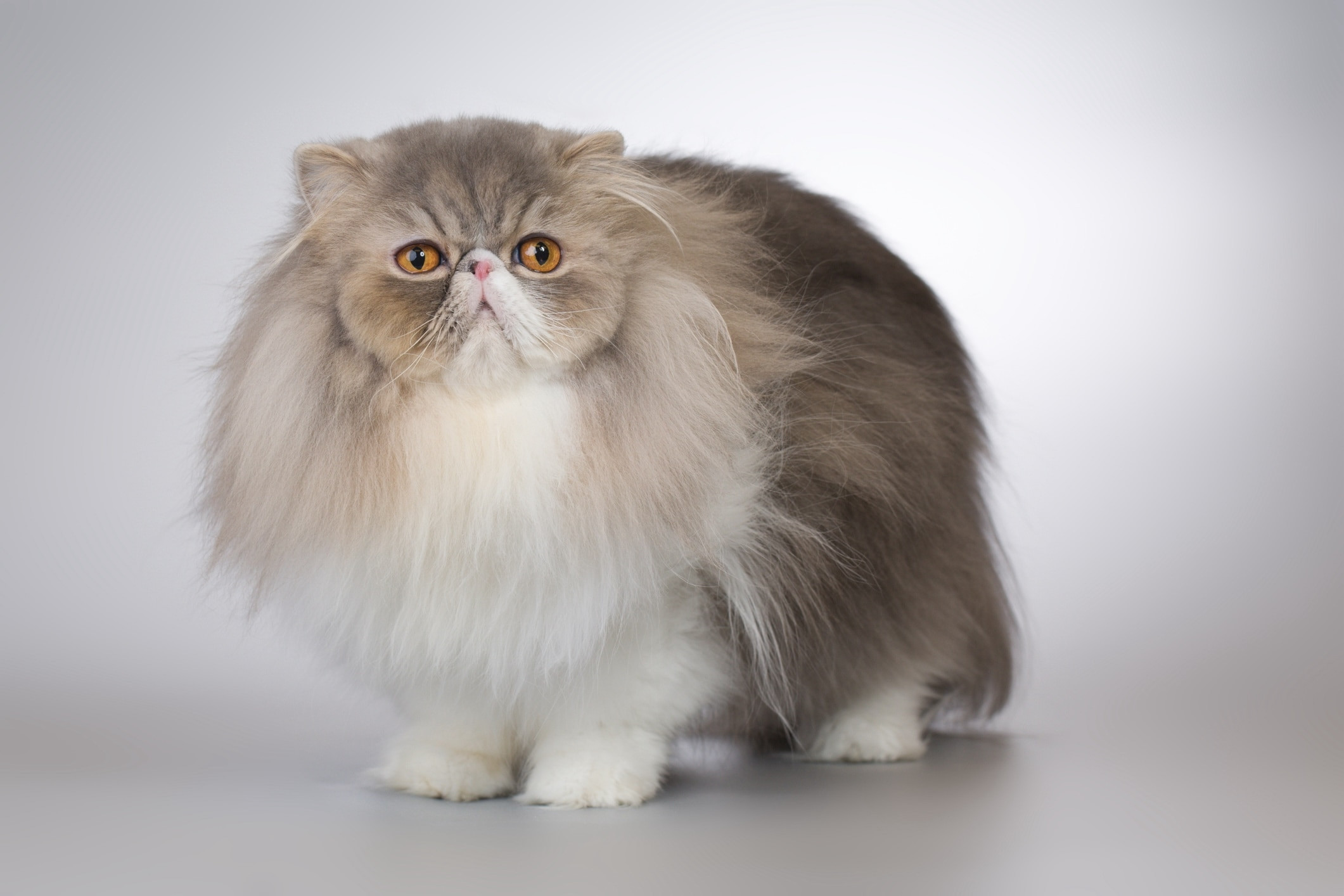 longhaired gray and white persian cat on a gray background
longhaired gray and white persian cat on a gray background
The Persian cat, a breed synonymous with luxury and elegance, stands out as one of the most beloved flat-faced felines. Recognizable by their long, flowing coats and distinctively flattened faces, Persian cats offer more than just striking looks. Stephen Quandt, a Certified Feline Training and Behavior Specialist (CFTBS), highlights their even-tempered and peaceful nature as key reasons for their enduring popularity. These gentle giants are known for their calm and docile personalities, making them ideal companions for those seeking a serene feline friend.
Persians are the epitome of relaxation, preferring leisurely activities such as lounging on laps and basking in sunbeams to more energetic pursuits. Unlike some breeds that enjoy scaling towering cat trees or engaging in vigorous play, Persians are content with a more laid-back lifestyle. Quandt describes their playfulness as gentle and almost perfunctory, suggesting that simple toys like feather wands are sufficient to satisfy their minimal play instincts. Daily grooming is not just recommended but essential for Persians; their luxurious long coats require diligent combing and brushing to prevent matting and tangles. However, grooming time is often a bonding experience, as Persians typically relish the attention, often expressing their contentment with soft meows and gentle purrs, reinforcing their affectionate nature.
2. British Shorthair
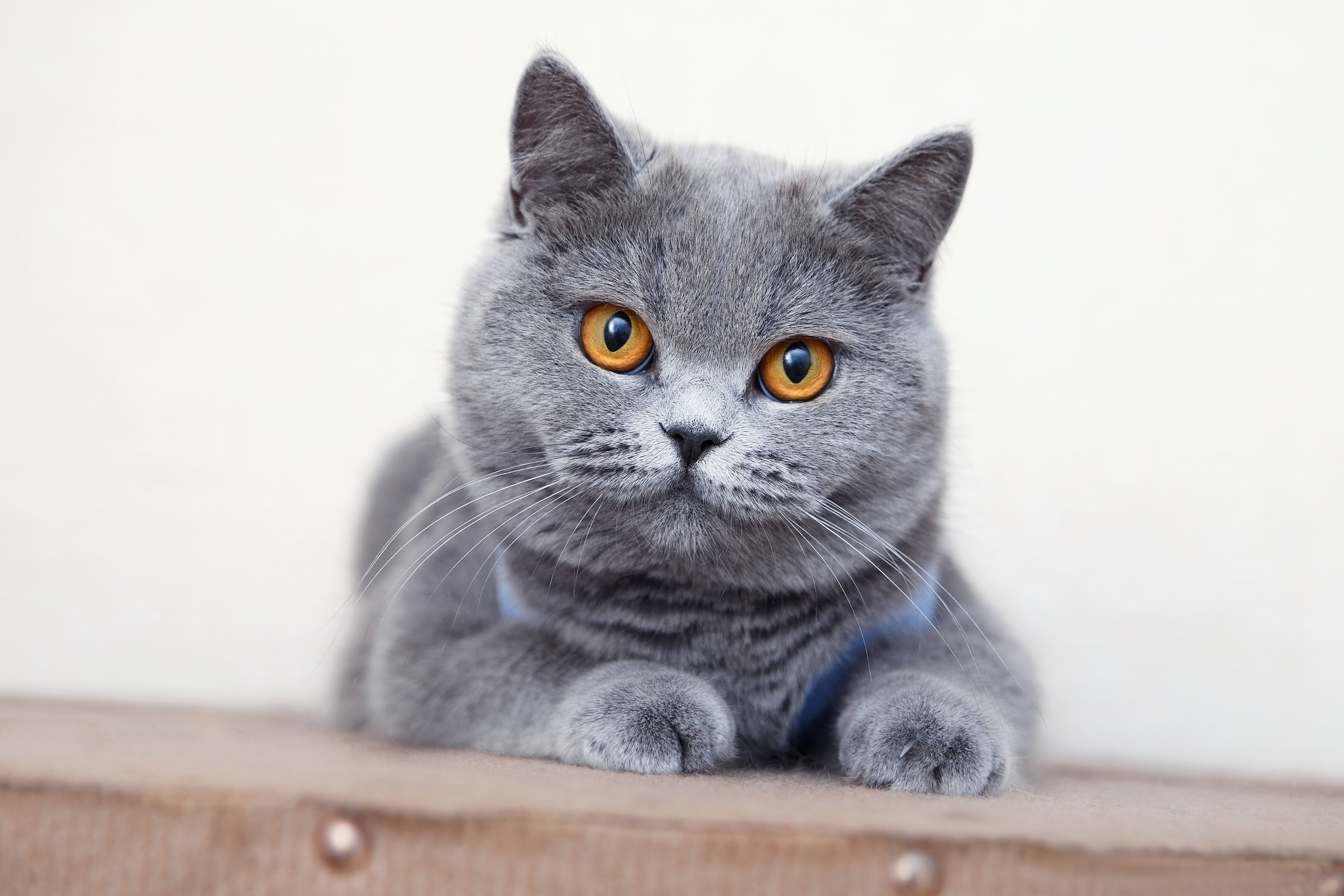 british blue british shorthair cat close-up
british blue british shorthair cat close-up
The British Shorthair cat, with its robust build and captivatingly round face, presents a slightly different flat-faced feline aesthetic. While possessing a flatter face compared to many breeds, their muzzle is more pronounced than some other flat-faced counterparts like Persians. This, coupled with their dense, plush fur, gives them an endearing teddy bear-like appearance that contributes to their widespread appeal.
British Shorthairs are known for their grounded personalities, preferring to keep their paws firmly on the floor. They are not particularly fond of being picked up and cuddled, appreciating personal space more than constant physical affection. While affectionate in their own way, they also possess a notable independent streak, happily occupying themselves and enjoying periods of solitude. This balance of affection and independence makes them particularly well-suited for busy pet parents who desire a loving companion that doesn’t demand constant attention. Their adaptable nature allows them to thrive in various home environments, further solidifying their position as a popular breed for a wide range of cat lovers.
3. British Longhair
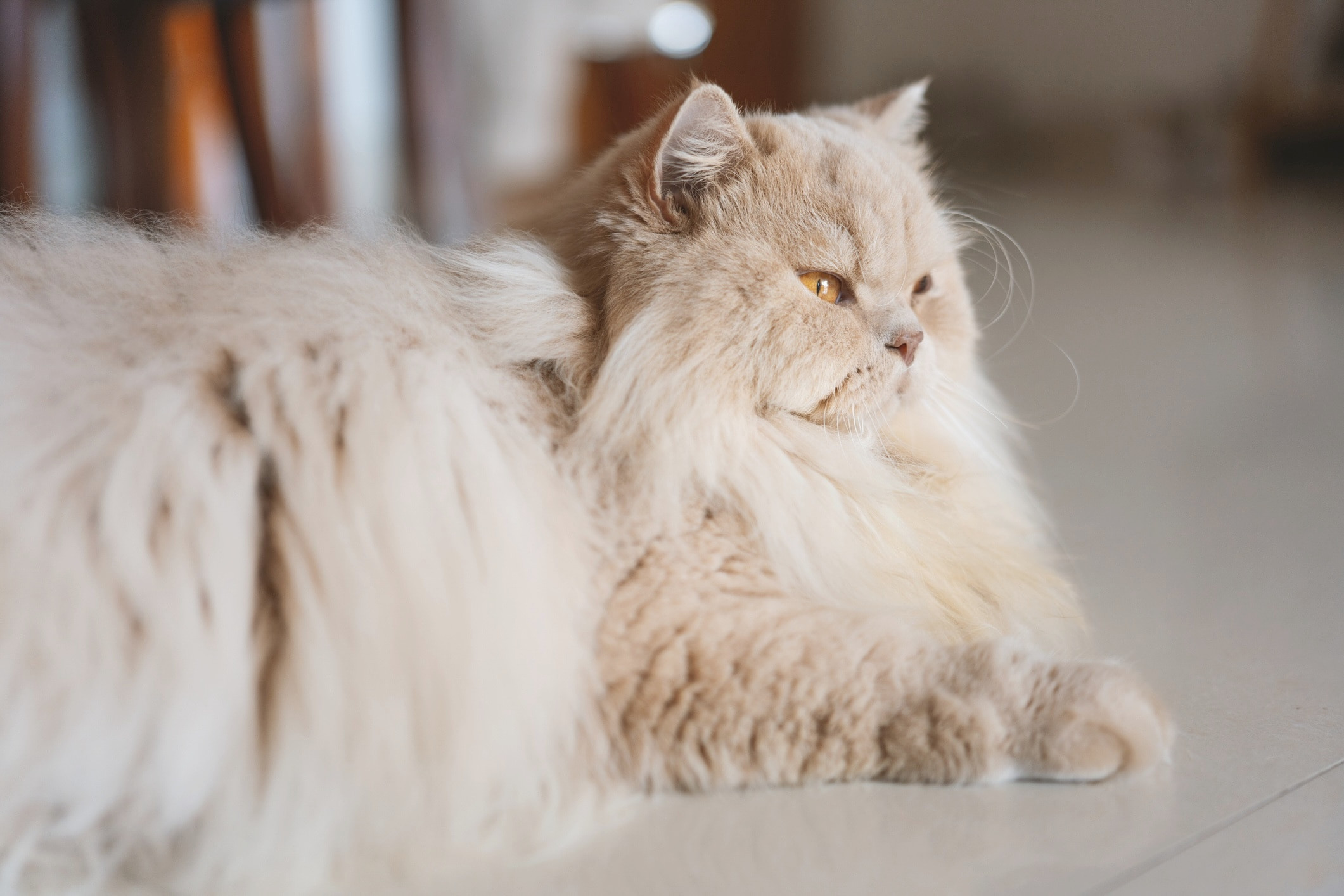 longhaired cream-colored british longhair cat lying down
longhaired cream-colored british longhair cat lying down
The British Longhair cat emerges as a delightful blend of two popular breeds, inheriting the best traits of both the British Shorthair and the Persian. As a crossbreed, they proudly display the thick, luxurious coat of the Persian and the charmingly rounded face of the British Shorthair. Beyond their appealing physical traits, they inherit a lovely temperament from both parent breeds, making them exceptional companions.
British Longhairs are recognized for their sharp intelligence and are notably motivated by food. This combination of traits opens up exciting possibilities for engaging and effective training sessions. Their eagerness to learn new tricks can transform training into a rewarding bonding activity, providing both mental stimulation and strengthened interaction between cat and owner. Whether it’s basic commands or fun tricks, their intelligence and food motivation make them highly trainable and responsive, enhancing their appeal as interactive and engaging pets.
4. Exotic Shorthair
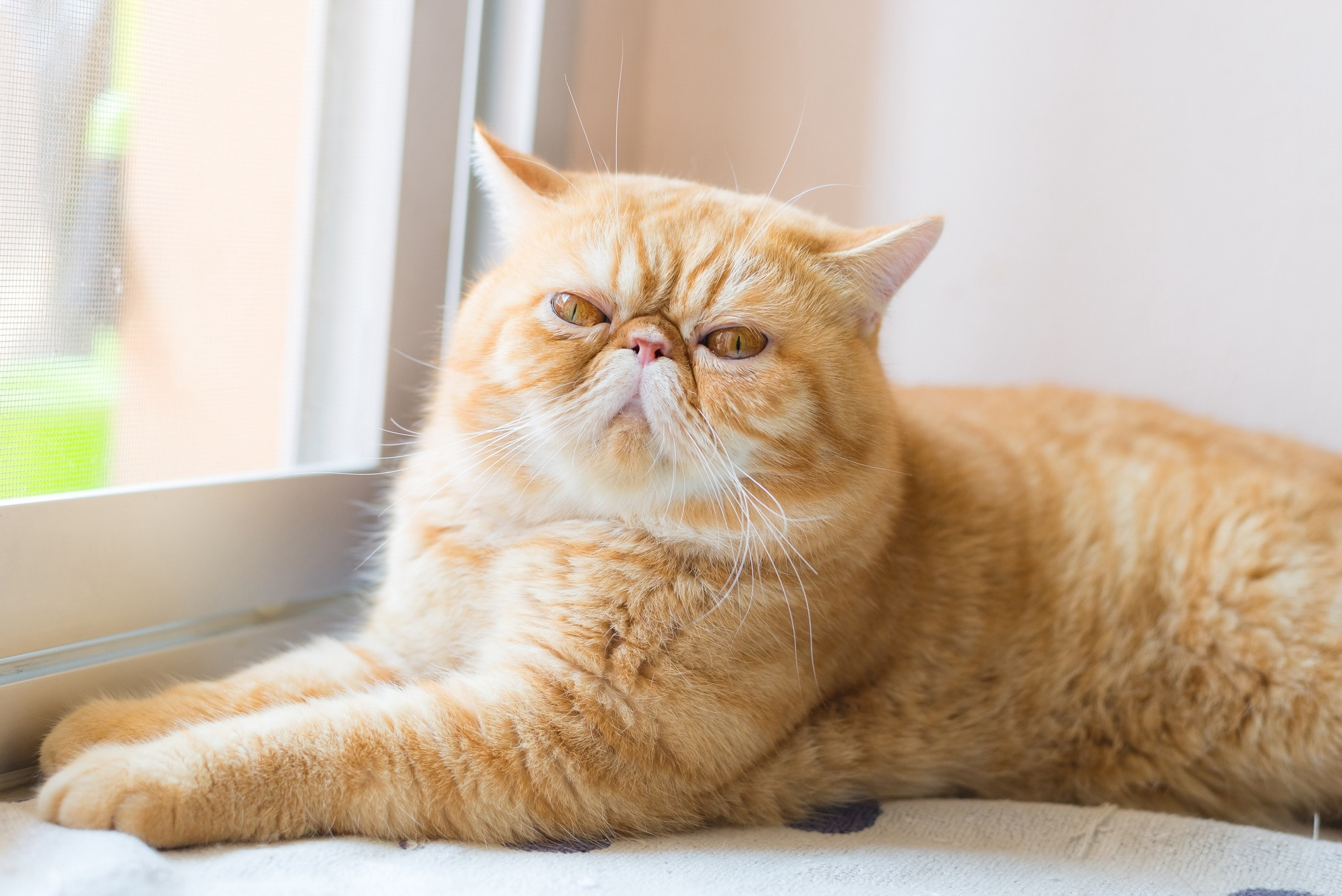 orange tabby exotic shorthair cat lying by a windowsill
orange tabby exotic shorthair cat lying by a windowsill
For those captivated by the Persian cat’s aesthetic but daunted by the commitment to extensive grooming, the Exotic Shorthair presents an ideal alternative. Often affectionately nicknamed the “lazy man’s Persian,” the Exotic Shorthair embodies the Persian look with a significantly more manageable coat. Their grooming needs are considerably less demanding, requiring only a weekly brushing to maintain their short, dense fur. Even during shedding season, more frequent brushing is usually sufficient, contrasting sharply with the daily intensive grooming required by their long-haired Persian cousins.
Like Persians, Exotic Shorthairs are not known for their love of heights or adventurous climbing. They are less likely to be found scaling cat trees or seeking out high vantage points. However, in terms of personality, Exotics tend to be more energetic and playful than Persians. This added liveliness makes them excellent companions for more active households, including families with children and other pets. With proper and gradual introductions, Exotic Shorthairs can integrate seamlessly into diverse family dynamics, bringing their playful yet gentle nature to enrich the home environment.
5. Himalayan
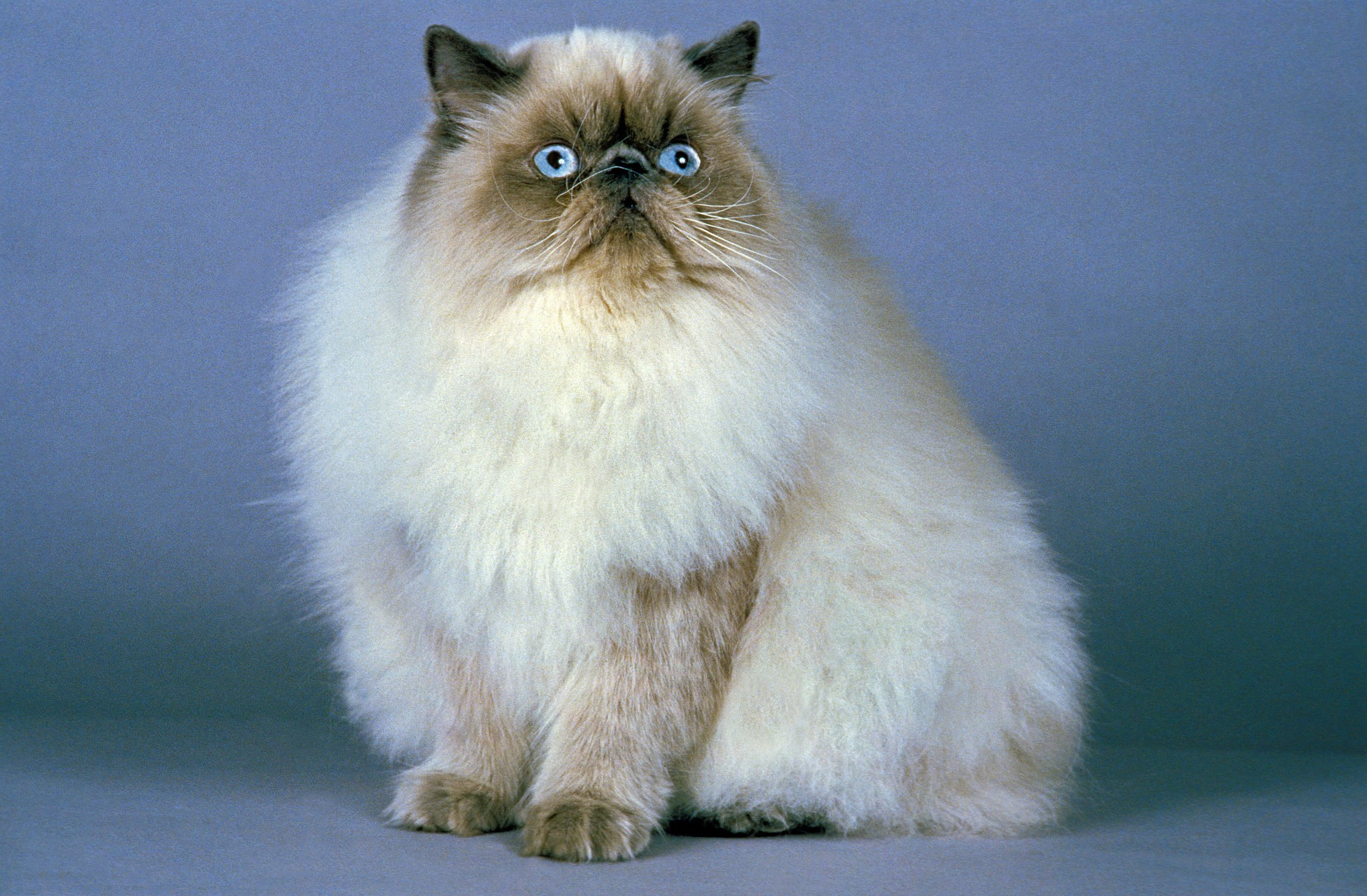 himalayan cat sitting against a blue background
himalayan cat sitting against a blue background
The Himalayan cat, a captivating breed resulting from the deliberate crossbreeding of Persians and Siamese, shares a significant number of characteristics with the Persian. They inherit their luxurious, fluffy coats from their Persian lineage, while the striking colorpoint markings—darker coloration on the ears, nose, paws, and tail—are a distinctive trait passed down from the Siamese. Despite their appearance of being overwhelmingly fluffy, beneath their voluminous fur lies a medium-sized cat, typically weighing between 7 and 12 pounds.
Himalayans are known for their adaptable and friendly nature, readily extending their affection to almost anyone who treats them with kindness. This amiable disposition makes them wonderful additions to a variety of family settings. However, much like their Persian relatives, Himalayan cats require a commitment to daily grooming to keep their long coats in prime condition. For those prepared to meet their grooming needs, Himalayans offer a loving and adaptable companionship, thriving in diverse home environments and bringing joy to their families.
6. Scottish Fold
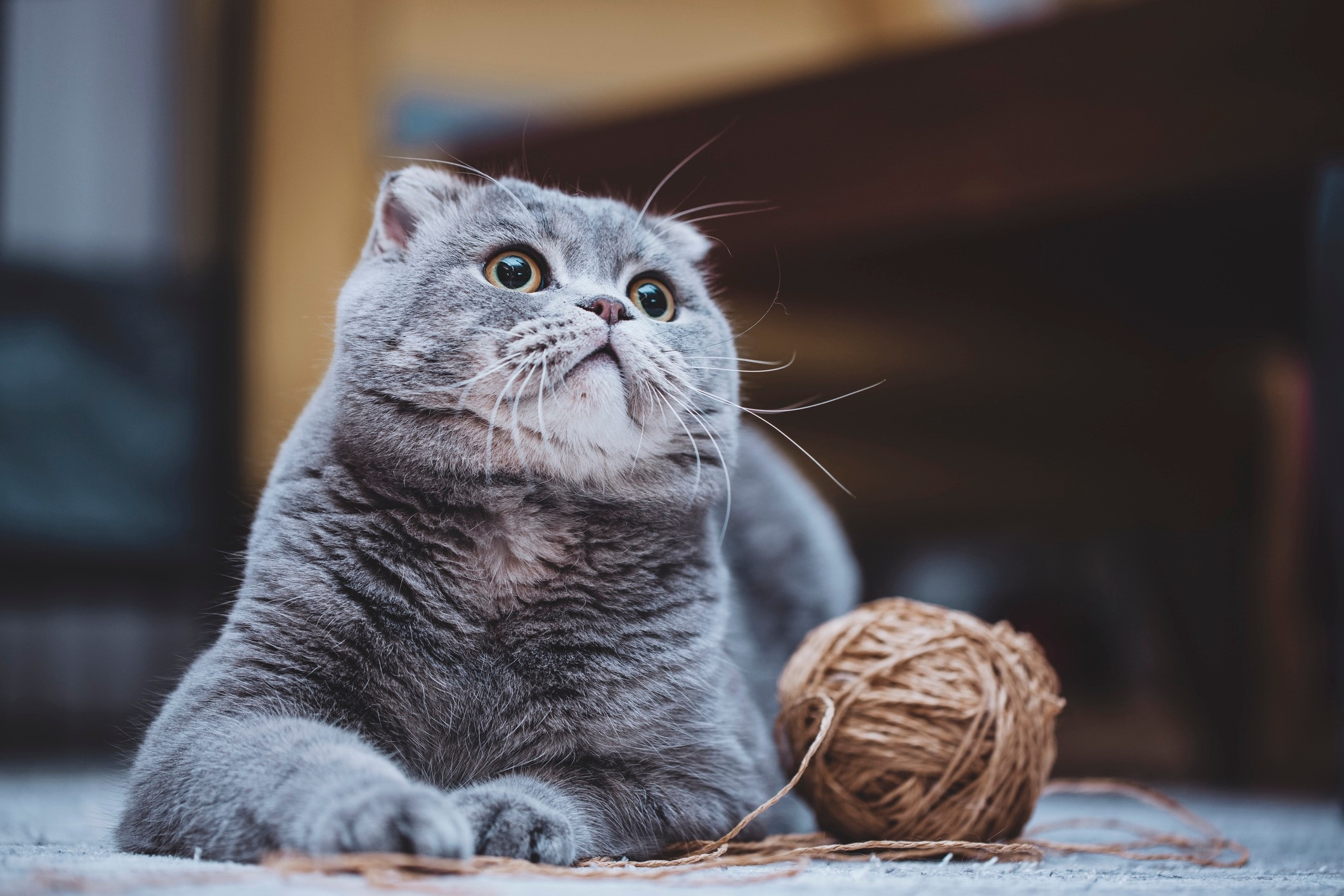 gray scottish fold lying next to a ball of yarn
gray scottish fold lying next to a ball of yarn
Scottish Folds have soared in popularity, largely due to their irresistibly rounded facial features and uniquely folded ears, contributing to their undeniably cute appearance. Their celebrity status, amplified by being the beloved breed of Taylor Swift, has further propelled them into the limelight. However, beneath the charm and celebrity association, ethical considerations cast a shadow over this flat-faced breed’s allure.
While described as “sweet and friendly” by Stephen Quandt, the Scottish Fold’s signature folded ears are a direct result of a genetic mutation. This mutation is responsible for osteochondrodysplasia (OCD), a painful and degenerative joint condition that affects cartilage and bone development throughout the body. This condition can lead to chronic pain and mobility issues, significantly impacting the cat’s quality of life. For individuals considering welcoming a Scottish Fold into their home, a deep understanding of feline body language is paramount. Recognizing subtle signs of discomfort is crucial for early intervention and care. Changes in behavior such as altered eating or bathroom habits, increased vocalization, a decline in interest in usual activities, or even unusual aggression (uncharacteristic for this breed) should never be dismissed. Any observed changes warrant prompt consultation with a veterinarian to ensure the cat’s health and well-being are prioritized.
7. Selkirk Rex
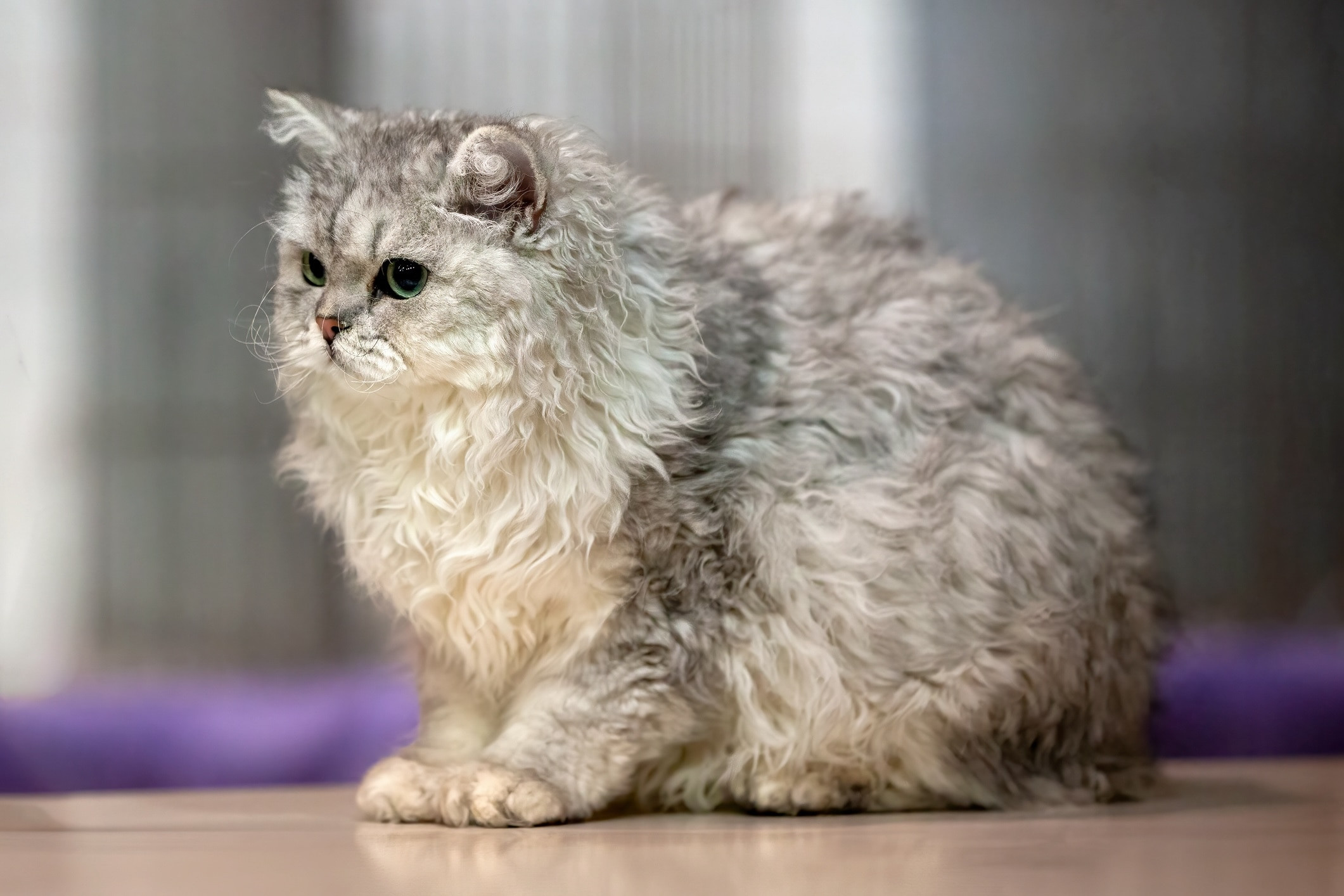 curly-coated selkirk rex cat loafing on the floor
curly-coated selkirk rex cat loafing on the floor
The Selkirk Rex stands out with its distinctive curly coat, a defining feature stemming from a unique genetic mutation. This breed carries a gene that results in a mane of curly hair, ranging in texture from tight ringlets to gentle waves. The coat’s density is owed to outcrossing with Persians and British Shorthairs, contributing to its lushness. While Selkirk Rex cats do shed, they require only weekly grooming to maintain their unique coat. However, it’s important to note that excessive brushing can disrupt their curl pattern, potentially leading to frizz or breakage. Gentle handling and appropriate grooming tools are key to preserving their distinctive curly locks.
In terms of personality, Selkirk Rex cats are generally known for their sweet and affectionate nature, thriving on human interaction. Early socialization, particularly exposure to new people, sights, and sounds, plays a vital role in shaping them into well-adjusted and confident adult cats. Proper socialization helps them develop into adaptable and friendly companions, comfortable in various environments and interactions.
Health Considerations for Flat-Faced Cats
While every cat, regardless of breed, can face health challenges throughout their lives, flat-faced cats, also known as brachycephalic breeds, are predisposed to a higher risk of certain health issues due to their unique anatomy. The skeletal structure of their skulls is characterized by shorter bones, which results in their signature rounded head shape, shortened nose, and a lower jaw that protrudes slightly beyond the upper jaw, creating an underbite. This brachycephalic conformation, while aesthetically appealing to many, can lead to several health concerns that potential owners should be aware of.
Brachycephalic Obstructive Airway Syndrome (BOAS)
Brachycephalic obstructive airway syndrome (BOAS) is a significant health concern for flat-faced cats. BOAS is a term encompassing a group of respiratory problems directly linked to the brachycephalic anatomy seen in these breeds. The shortened facial structure can compromise their respiratory system in several ways, making breathing more challenging.
Specifically, in flat-faced cats, breathing difficulties can arise due to:
- Elongated soft palate: The roof of the mouth may be excessively long, obstructing airflow into the trachea.
- Hypoplastic trachea: The windpipe can be abnormally narrow, restricting the passage of air to the lungs.
- Everted laryngeal saccules: Small sacs within the larynx can turn outwards, causing airway obstruction.
- Stenotic nares: The nostrils may be overly narrow, limiting the amount of air that can be inhaled.
While the snoring and snorting sounds often associated with flat-faced cats might be perceived as endearing, they can be indicators of underlying respiratory distress. BOAS can manifest in a range of symptoms, varying in severity depending on the degree of airway obstruction. Common symptoms include open-mouthed breathing, noisy respiration, reduced tolerance to exercise and heat, coughing, gagging, reverse sneezing, and noticeable increased effort when breathing.
These symptoms can be exacerbated by factors such as being overweight, exposure to hot and humid weather conditions, and stress. Owners of flat-faced cats must be vigilant in monitoring for any signs of respiratory distress. Open-mouth breathing, in particular, is a serious symptom that warrants immediate veterinary attention. In severe cases of BOAS, surgical intervention may be recommended to alleviate airway obstruction and improve breathing.
Eye Issues
Flat-faced cats are also more susceptible to various eye problems due to the shallowness of their eye sockets. This anatomical feature causes their eyes to protrude more prominently, and their eyelids may not fully close, leaving the eyes partially exposed. Consequently, they are predisposed to inflammation and corneal ulcers, which are scratches or lesions on the surface of the eye. Chronic watery eyes, often accompanied by tear staining, are also common in flat-faced breeds. The compressed facial structure can also lead to malformation of the tear ducts, further contributing to tear drainage issues.
Regular eye care is essential for flat-faced cats. Consulting with a veterinarian is recommended to determine appropriate cleaning products and routines to maintain eye hygiene and health. Prompt veterinary attention is necessary if you observe signs such as squinting, increased eye discharge (especially if it’s yellow or green), pawing or rubbing at the eyes, or redness or cloudiness of the eyes. These symptoms can indicate underlying eye conditions that require timely diagnosis and treatment to prevent complications and ensure the cat’s comfort and vision.
Dental Disease
Dental disease represents another significant health concern for cats in general, with a high prevalence rate, particularly in older cats. According to Cornell University Feline Health Center, a staggering 50–90% of cats over the age of 4 exhibit some form of dental disease. However, flat-faced cats face an even elevated risk of dental problems due to their unique jaw and teeth alignment. Their brachycephalic anatomy often results in overcrowded and misaligned teeth within their shortened jaws. This dental crowding creates numerous small spaces where food particles and bacteria can accumulate, leading to increased plaque and tartar buildup.
Preventive dental care is paramount for flat-faced cats. Daily teeth brushing is highly recommended as the most effective method to minimize plaque accumulation. Regular veterinary checkups, including professional dental cleanings, are also crucial for maintaining optimal oral health. These routine dental care practices can significantly reduce the risk of dental disease and help ensure the long-term dental well-being of flat-faced feline companions.
